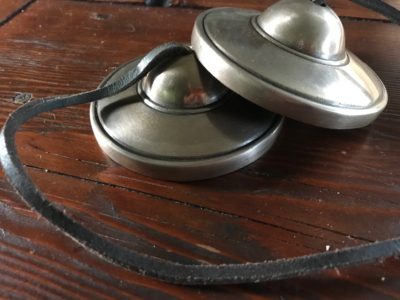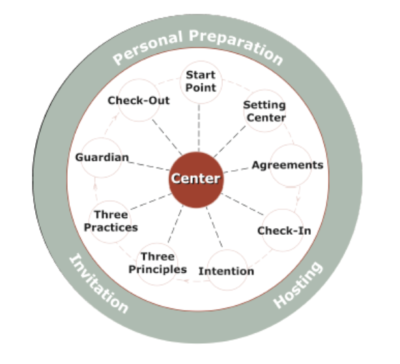
Last year I got to teach and host The Circle Way Practicum in Northern New South Wales, Australia. I hosted with Amanda Fenton and Penny Hamilton, both wonderful and skilled people. The participants were fantastic — very committed to learning and connection. I’ve stayed in touch with a few of them in the way that you can’t not do when you’ve been in deep practice together. It’s fun for me to remember the bird sounds of the rain forest and to feel a gratitude for far travels and big journey.
During the practicum, I remember a participant asking, “What is your favorite component of The Circle Way?” The question is a reference to some key structural aspects of circle intended to provide a steering wheel to help correct what goes awry in many contemporary meetings and gatherings.  The question was asked in a playful way — like inviting response to what was your favorite vacation ever? My response to such questions is usually a delighted smile, to be asked. And it usually has some, “well, in this moment of reflection, here is one of my favorites….”
The question was asked in a playful way — like inviting response to what was your favorite vacation ever? My response to such questions is usually a delighted smile, to be asked. And it usually has some, “well, in this moment of reflection, here is one of my favorites….”
If I were responding to this question now, from my learning of the last two months in particular, I’d have to say that my “favorite” component is the guardian, and even further, using bells or a singing bowl as a way of inviting shared responsibility (one of the three principles). In The Circle Way tradition, the role of guardian is to help keep the circle on it’s intended purpose. This is a great thing. The guardian most often sits across from the person hosting the circle. I often say as a caution that the guardian doesn’t police the circle. The guardian is full participant, but gives extra attention to the energetic quality of the circle — is it on track, are we getting tired, are we getting to speedy, is it time for restrooms.
My favorite thing with guardian lately, has been two aspects. First, naming the practice of ringing the bells twice (or another agreed device). The first ring is to pause the action and dialogue that is happening. The second ring is to resume action and dialogue, but before that resumption, to share a sentence about why the bell was rung. Perhaps it was to slow down. Or, to hear what is being spoken. Or ringing the bells just to pause.
The second favorite aspect with guardian is naming that anyone in the circle can ask the guardian to ring the bell. The guardian may be the person holding the bells or has them resting in front of them, but anyone in the circle can ask the guardian to ring them, and then follow the same protocol of pausing, resuming, and sharing what was the reason to ring them.
I have often said that the circle is not about the bells. It’s true that you can circle without bells or a similar signal. I’ve said that what matters is the spirit of being in circle. Both of those orientations remain true for me. However, it’s become much more clear to me that this experience of sharing responsibility for the well-being of the group is transformational. That simple practice moves the circle from “yours to ours” or from “someone’s to all of ours.” It’s coupled with a group agreement to pause from time to time, and to have the full group tend to that agreement of tending to the full group. It’s one of those expressions of leader in every chair.
Learning together, this will always matter. Like it did in Northern New South Wales last year. Sometimes it’s the little things that make such a big difference. Shared responsibility and leadership are tremendous values. Good words. The role of guardian and utilizing the bells to pause is practice, is todo, that brings the words of shared responsibility to vibrant life.
I’m glad to be teaching this again in two months, back to Australia with Penny and Amanda, a bit further north in the Sunshine Coast area.
Come? To ring the bells in learning and connection and cultivation of essential practices of shared leadership.



